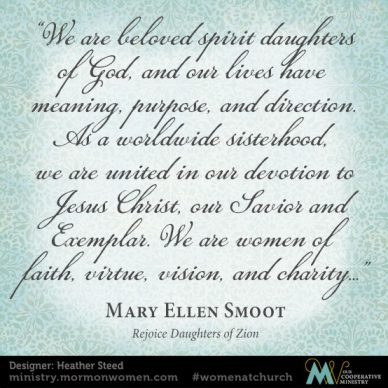The Gospel Doctrine lesson #2
These early lessons in this year’s Church History (D&C) curriculum are organized thematically, rather than chronologically or by section, so this week’s lesson attempts to explore the character of Jesus Christ as represented in the Doctrine and Covenants. As we jump around the book to the various scriptures referenced in the lesson, we encounter many first person statements by the Lord Himself (D&C 19 for example) and we also encounter sections which refer to the Lord in third person and are written from the point of view of Joseph himself (D&C 76 for example). There is no doubt that Jesus is the protagonist of the Doctrine & Covenants. It is His voice that reverberates most plainly throughout its pages, allowing us to gain insight into the character of the Savior and how he deals with men in the latter days.
And it is indeed to the “children of men” that many sections are addressed. After the Savior Himself, the other key figures in this book of scripture are overwhelmingly men. In fact, the Doctrine & Covenants has the smallest presence of women of any of our canonical works. In the sections most completely devoted to the organization and administration of the Church, such as Section 107, there is no mention of women and explicit mention of men being the audience for such instruction. As women, where do we find ourselves in the Doctrine & Covenants when it, as the guidebook for administering the modern church, it is almost wholly about and addressed to men?
It is for this exact reason that we must cling to lessons like this week’s, “Behold, I am Jesus Christ, the Savior of the World,” which are entirely focused on the gift of the atonement that is equally available to both men and women. Lessons like this focus on the individual application of the atonement, separate and apart from the activities of men that are depicted in so much of the book’s historical context.
In this lesson, we can truly focus on what it means to have the Savior suffer and die just for us, for we women, unmoderated by the men’s experiences. In Section 19, the Savior says he “suffered these things for all,” emphasizing the individuality of salvation that comes from His suffering. (See last week’s lesson “Unto All” for a discussion of the Doctrine & Covenants’ invitation to all.) We can read the emotion in His statement, the rhetorical pain expressed in the punctuation itself in verse 18 when the Savior cuts off his own remembrance of that horrible pain: “Which suffering caused myself, even God, the greatest of all, to tremble because of pain, and to bleed at every pore, and to suffer both body and spirit—and would that I might not drink the bitter cup, and shrink—”
The application of the atonement is an individual, genderless exercise requiring simply the priesthood power that all have access to. As we proceed through the Doctrine & Covenants this year, we can remember that, in the midst of the men’s mission calls and administrative duties and kingdom building, it is the Savior’s call to repentance and salvation that is at the heart of the book.
Related Mormon Women Project Interviews
Turning to the Atonement, M.P.
“…by some miracle, I began to find the power to overcome this experience. It came straight from the Atonement. I was reminded that it was possible to forgive and love, even while being crucified to a cross. So, I did that. I followed Christ’s example. It was a miracle to me that I could do this. But somehow I was able to feel all the love, compassion and forgiveness in the world, even in the worst moments of my life. Never in my life have I felt the Spirit so strongly or felt as empowered as when my marriage was ending. Even though losing my husband was the worst thing I ever could have imagined for myself, it was the most beautiful time of my life and I would do it all over again, just to be able to walk away with the testimony and peace that I have today.”
We Are Made for Love and Light, Rachel von Niederhausern
“People are made for love and light. God is so mindful. He loves all his children, no matter where you are, and if you tap into that love then you can’t help but start seeing others who need love. But it has to start with yourself, and then with your family, and it’s all one circle of love. Let it be messy, and let it be real, and just don’t worry. Don’t even try to be perfect! It’s no fun! Rely on the Atonement and on Heavenly Father’s perfect plan and then love and joy will flow so much better.”
Other Related Women’s Voices


Looking for additional perspectives on this lesson? We recommend Mormon Sunday School, Meridian Magazine and LDSLiving.
